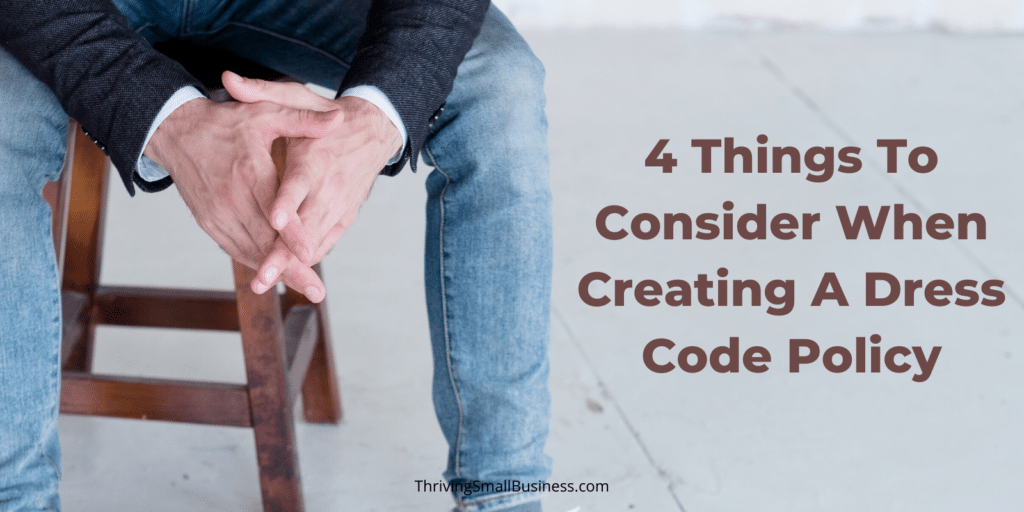Office Dress Code – 4 Things to Consider When Creating a Dress Code Policy
Estimated reading time: 4 minutes
As a grade schooler I learned the discipline of dress code because I went to a private school that required uniforms.
The positive aspect of wearing a uniform is that it takes the thinking out of what to wear in the morning, the downside is uniforms are usually boring and get old really quick.
The reason many schools have uniforms is to enforce a consistent look for all the kids.
When I entered the workforce, the dress code for office workers was fairly formal.
Most required women to wear dresses or skirts and eventually, business pants suites became very common.
Through the years, the formality faded, and business casual became more popular.
As the Silicon Valley techie companies came into being, casual dress began to break the corporate rules for dress, and casual clothes became more commonplace.
Years ago, it was common for businesses to have casual Fridays when employees could wear their khakis and polo shirt, and more recently casual Fridays very often mean blue jeans.
I worked in health care for many years and the clinical employees wear scrubs and the administration employees wear more business attire.

Dress codes are kind of a drag because no one really wants to be told what they have to wear to work and no manager really wants to confront an employee who doesn’t comply with the code.
But the policies are usually written because one employee crossed the line and forces a formal office dress code policy.
According to a salary.com survey, some respondents felt like a dress code made the workplace feel professional, while others didn’t agree that wearing jeans would affect job performance.
A small percentage of respondents were not even sure of what their companies dress code policy was, and those that were aware of a dress code said that it was unclear – which leads to confusion.
Nearly 25% said their office dress code was too lenient and shared stories of low-cut tops, holes in blue jeans, and exposed body piercings and tattoos that they considered inappropriate for the office.
So what things should you consider when creating office dress code guidelines?
1. Organizational Culture
Every business has an organizational culture that should dictate any type of formal office dress code policies. The way employees dress is a direct reflection of the organization and communicates such.
This doesn’t mean that the blue jean and t-shirt culture at Apple is unprofessional – they are very professional –but it is more so reflective of their particular culture. Think of meeting with your financial advisor and seeing them in blue jeans and a t-shirt might make you question their professionalism.
It’s all about the corporate culture and what your culture is trying to communicate to the general public.
2. Office Distractions
Part of the reason schools have kids wear uniforms is to minimize the distractions that come with some styles of clothing.
The same is true in any kind of business setting.
Whether it is clothes that fit too tightly, shows a little too much skin, or is dirty and not well-groomed, all of these things can create distractions in the workplace.
3. Discriminatory Practices
When creating a dress code policy, it is important not to discriminate against race, gender, or religious traditions.
An example of this might be prohibiting the wearing of hats when some religious cultures use head-wear. You can get more information on the EEOC website.
4. Consistency in Application
One of the biggest mistakes organizations make is not being consistent in policy enforcement.
When a policy is written and not enforced consistently, it can create biases that are difficult to defend in a court of law.
If you are going to create a dress code policy, it is important to make sure it is enforced without bias and consistently throughout the organization.
When creating your dress code policy consider the culture you are trying to reflect the community, the atmosphere you want your employees to enjoy, and the boundaries employees need to abide by.
Whether your culture is blue jeans and t-shirts or business suits and ties, it should reflect the organization’s personality and culture.
Does your organization have a dress code policy?






